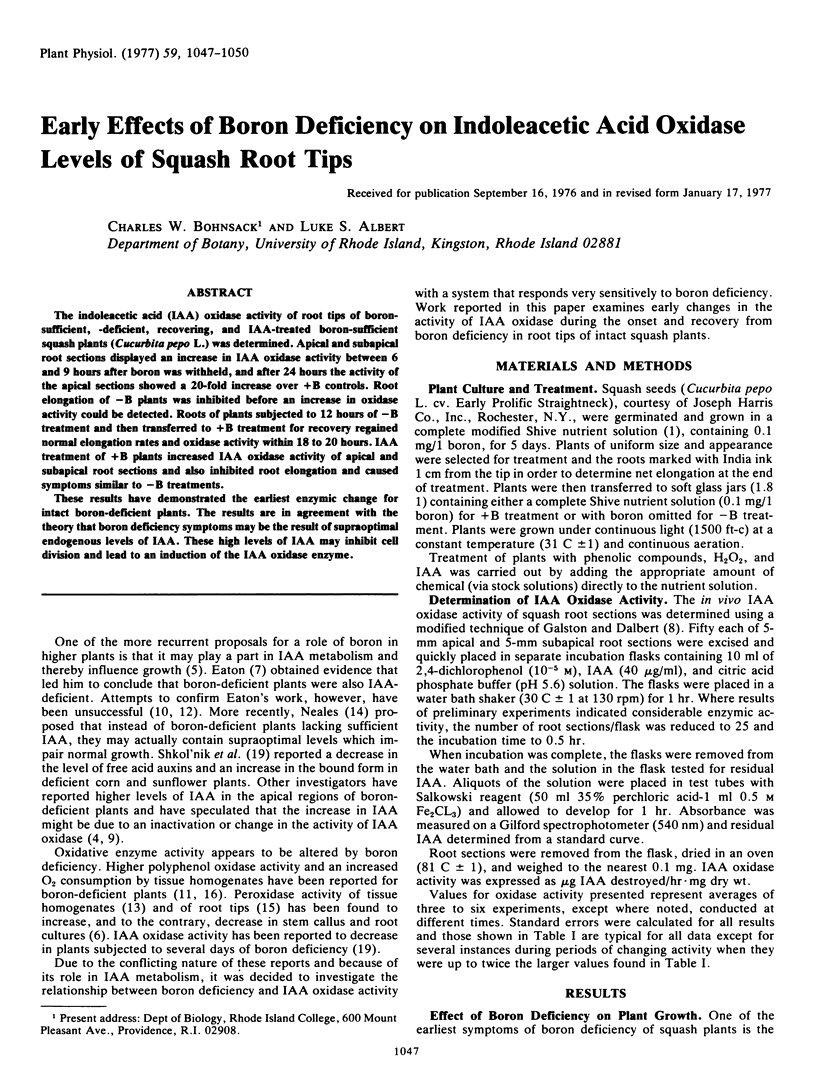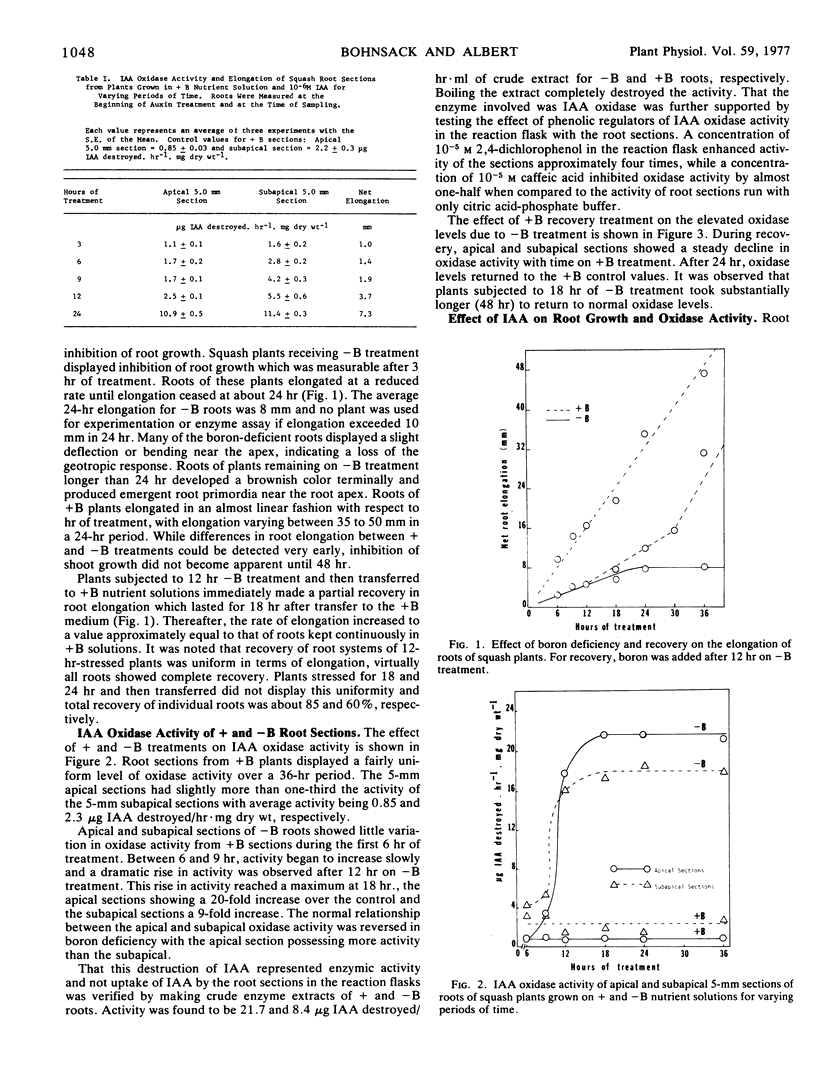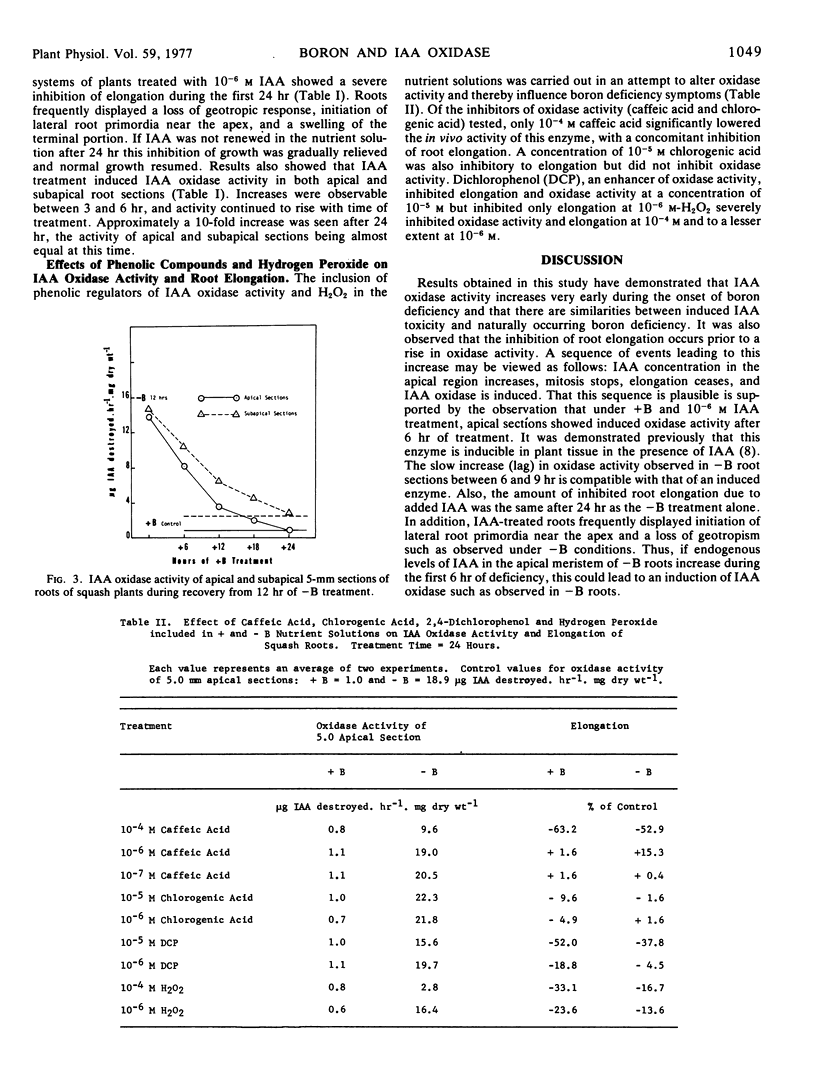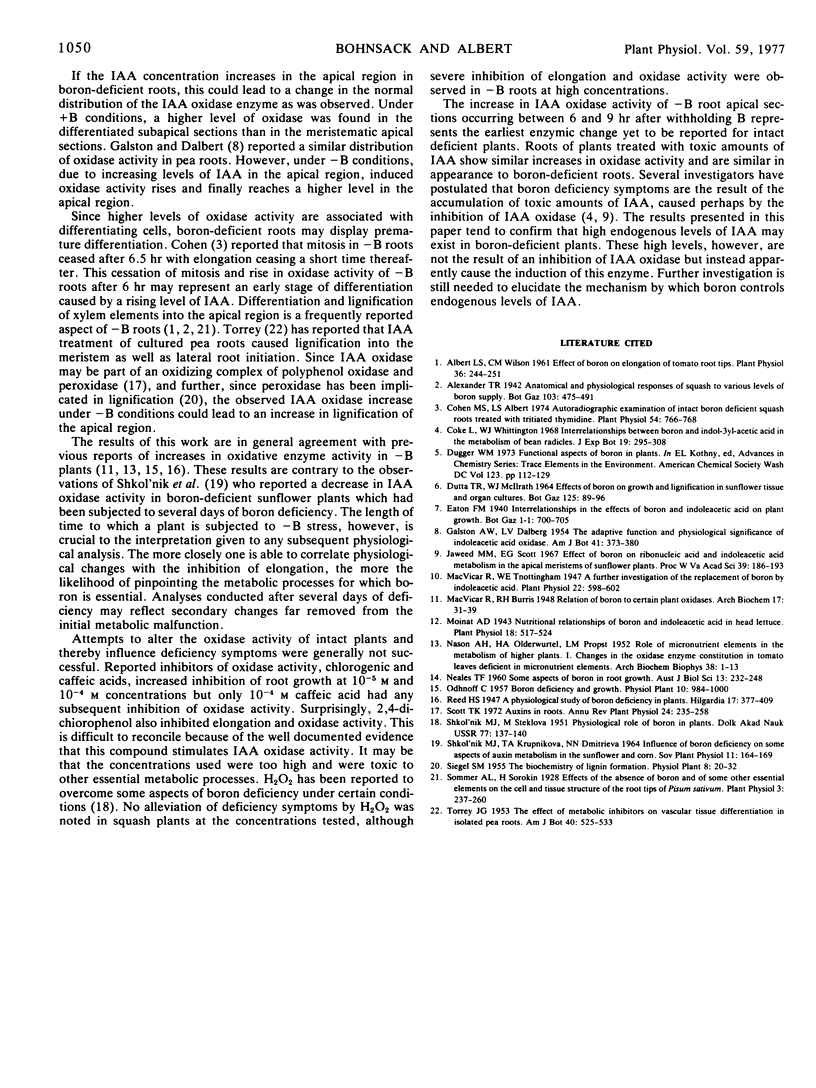Abstract
The indoleacetic acid (IAA) oxidase activity of root tips of boron-sufficient, -deficient, recovering, and IAA-treated boron-sufficient squash plants (Cucurbita pepo L.) was determined. Apical and subapical root sections displayed an increase in IAA oxidase activity between 6 and 9 hours after boron was withheld, and after 24 hours the activity of the apical sections showed a 20-fold increase over +B controls. Root elongation of -B plants was inhibited before an increase in oxidase activity could be detected. Roots of plants subjected to 12 hours of -B treatment and then transferred to +B treatment for recovery regained normal elongation rates and oxidase activity within 18 to 20 hours. IAA treatment of +B plants increased IAA oxidase activity of apical and subapical root sections and also inhibited root elongation and caused symptoms similar to -B treatments.
These results have demonstrated the earliest enzymic change for intact boron-deficient plants. The results are in agreement with the theory that boron deficiency symptoms may be the result of supraoptimal endogenous levels of IAA. These high levels of IAA may inhibit cell division and lead to an induction of the IAA oxidase enzyme.
Full text
PDF



Selected References
These references are in PubMed. This may not be the complete list of references from this article.
- Albert L. S., Wilson C. M. Effect of boron on elongation of tomato root tips. Plant Physiol. 1961 Mar;36(2):244–251. doi: 10.1104/pp.36.2.244. [DOI] [PMC free article] [PubMed] [Google Scholar]
- Cohen M. S., Albert L. S. Autoradiographic Examination of Meristems of Intact Boron-deficient Squash Roots Treated with Tritiated Thymidine. Plant Physiol. 1974 Nov;54(5):766–768. doi: 10.1104/pp.54.5.766. [DOI] [PMC free article] [PubMed] [Google Scholar]
- Macvicar R., Tottingham W. E. A Further Investigation of the Replacement of Boron by Indoleacetic Acid. Plant Physiol. 1947 Oct;22(4):598–602. doi: 10.1104/pp.22.4.598. [DOI] [PMC free article] [PubMed] [Google Scholar]
- Moinat A. D. NUTRITIONAL RELATIONSHIPS OF BORON AND INDOLEACETIC ACID IN HEAD LETTUCE. Plant Physiol. 1943 Jul;18(3):517–523. doi: 10.1104/pp.18.3.517. [DOI] [PMC free article] [PubMed] [Google Scholar]
- NASON A., OLDEWURTEL H. A., PROPST L. M. Role of micronutrient elements in the metabolism of higher plants. I. Changes in oxidative enzyme constitution of tomato leaves deficient in micronutrient elements. Arch Biochem Biophys. 1952 Jul;38:1–13. doi: 10.1016/0003-9861(52)90002-7. [DOI] [PubMed] [Google Scholar]
- SHKOL'NIK M. IA, STEKLOVA M. M. K voprosu o fiziologicheskoi roli bora u rastenii. Dokl Akad Nauk SSSR. 1951 Mar 1;77(1):137–140. [PubMed] [Google Scholar]
- Sommer A. L., Sorokin H. EFFECTS OF THE ABSENCE OF BORON AND OF SOME OTHER ESSENTIAL ELEMENTS ON THE CELL AND TISSUE STRUCTURE OF THE ROOT TIPS OF PISUM SATIVUM. Plant Physiol. 1928 Jul;3(3):237–260.1. doi: 10.1104/pp.3.3.237. [DOI] [PMC free article] [PubMed] [Google Scholar]


